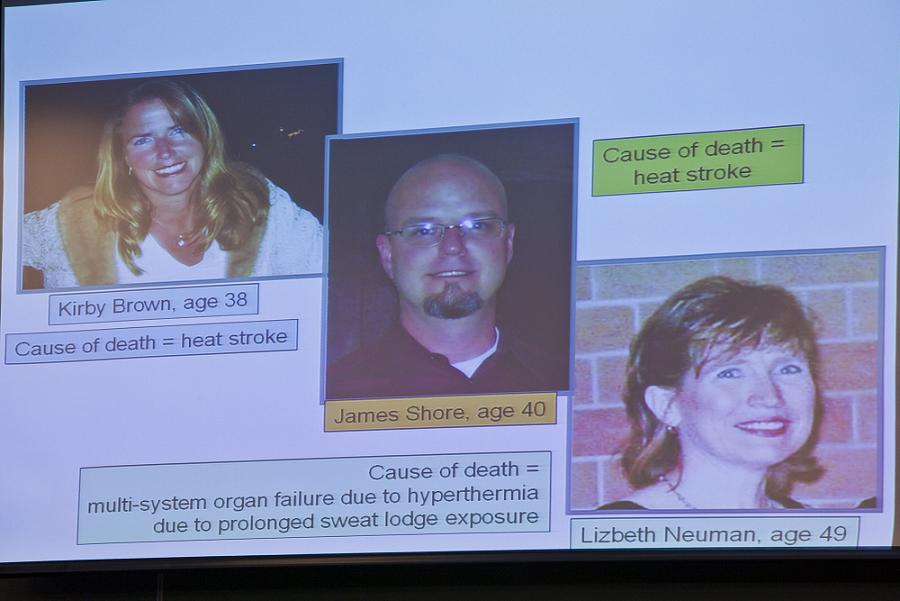Testimony continued last week in the manslaughter trial of James Arthur Ray. Lead detective Ross Diskin with the Yavapai County Sheriff’s Office took the stand to relate accounts of his investigation.
Ray, 53, is a motivational speaker and self-help author facing three counts of manslaughter in Yavapai County Superior Court.
The charges stem from a fatal incident at an October 2009 weekend event, held at the Angel Valley Retreat Center outside of Sedona.
Lizbeth Neuman, 49, of Michigan, Kirby Brown, 38, of New York and James Shore, 40, of Wisconsin, died after participating in a sweat lodge ceremony held in a large tentlike structure that was heated to high temperatures with water poured on hot rocks.
The ceremony came at the end of a weeklong “Spiritual Warrior” event, a $10,000-a-head seminar hosted by Ray’s company, James Ray International.
Brown and Shore were pronounced dead the day of the event; Neuman never regained consciousness and died days later in the hospital.
Medical examiners determined the cause of death was exposure to the extreme temperatures inside the lodge but Ray’s defense team has argued against those findings.
The defense has argued that the deaths were the result of an accident, not a crime, and that there could have been other factors that led to the deaths that evening.
Arguments have focused on the possibility that the rocks used in the sweat lodge were heated in a fire that burned with pressure-treated lumber, releasing toxins that could have become airborne when water was poured on the rocks inside the tent.
Defense attorney Thomas Kelly questioned Diskin about this and other possibilities under cross-examination Friday.
Kelly pointed out that initial reports from emergency medical personal on the scene indicated that the dead and injured were showing signs of a “possible chemical exposure.”
Diskin said that while he didn’t interview those medical personnel in the course of the investigation, he did look into reports that the treated lumber may have been a factor. Diskin said samples of several pieces of wood from the site were sent to a lab for examination.
Kelly said that some of the wood tested positive for “volatiles” when burned, certain chemicals that were released in the reaction including methane and ammonia. The lab results came back a day after the grand jury indicted Ray, according to Diskin’s testimony, meaning the grand jury didn’t have access to that information.
After the trial had started, Diskin said that he ended up back on the retreat property when the owners told him about the rat poison stored in a pump house, the same pump house where the tarps used in the sweat lodge’s construction were stored.
Diskin said the rat poison was chosen by the owners because it had the least environmental impact. Kelly cast doubt on the truthfulness of the owners, implying that it seemed convenient they would volunteer a re-creation of what the pump house may have looked like in 2009 after rat poison was already mentioned during the trial in progress. Kelly also brought up that the retreat was facing lawsuits and potential bankruptcy in the wake of the 2009 incident.
Diskin said he could not speak to how truthful or untruthful the owners were trying to be with this information.
“People can believe that they can talk to animals and that doesn’t mean they’re lying,” Diskin said.”
Testimony is expected to continue this week at the Yavapai County Superior Courthouse in Camp Verde.
